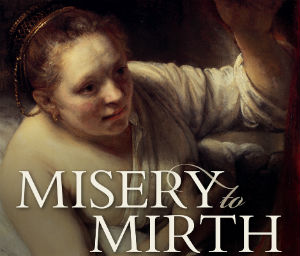Get well soon! A hidden history of recovery from illness
04 June 2018

Diary extracts penned by a 17th century mother about her child’s battle against a deadly illness are being shared to tell a little-known, happy history of healing.
The actual words a mother from Yorkshire used in around 1667 to describe her anguish at seeing her daughter contract smallpox, and her joy at her subsequent recovery, will be published in a series of tweets this week.
A tale of optimism, hope and love will be retold ahead of the publication of a new book exploring the true story of healing, long before the birth of modern medicine.
Misery to Mirth, by Wellcome Trust Award Lecturer at the University of Reading, Dr Hannah Newton, will be published on 7 June by Oxford University Press, and will be available to download for free.
Watch Dr Newton explain her research >>>
Dr Newton said: “We tend to assume that if you fell sick centuries ago, the chances are you would have died. However, the truth is very different.
“In my research, I found – scattered amidst heartrending accounts of suffering and death – wonderful stories of survival and recovery. By broadcasting these happier histories, I want to rebalance and brighten our overall picture of pre-modern health.”
Misery to Mirth is the first book devoted to the history of recovery from illness. Drawing on sources such as old diaries and doctors’ casebooks, it provides poignant insights into what it was like to get better from a serious illness in the 17th century. It shows recovery did occur, and was a widely reported disease outcome, despite the fact medicine was based on theories that no longer hold any scientific credence.
To promote her book, Dr Newton will be 'live' tweeting all week, recounting a real example of recovery from this period. Inspired by the diary entries of 17-century Mum, Alice Thornton, they describe the illness and recovery of 14-year-old Nally, who was born 365 years ago.
Many of the tweets quote directly from Alice’s diary, providing rare glimpses into the sufferings and eventual relief of young Nally as she battled with smallox, a dreaded disease that caused temporary blindness and intolerable pain. Dr Newton has also included extracts from other diaries of the period.
Dr Newton said: “In the same way modern-day patients often tell their survival stories through blogs or social media, early modern patients and their loved ones recorded their own journeys through illness, treatment, and recovery.
“I hope that sharing personal stories of recovery from nearly 400 years ago will bring us closer than ever before to what it was like to be alive in the premodern past. We will see that people in the 17th century were not that different from us, with intense emotions, feelings, and relationships”.
Follow Alice Thornton’s story on Twitter until 9 June by following @17thCenturyMum.
